Serving 798 students in grades 8-12, Hayden High School ranks in the top 50% of all schools in Alabama for overall test scores (math proficiency is bottom 50%, and reading proficiency is bottom 50%).
The percentage of students achieving proficiency in math is 19% (which is lower than the Alabama state average of 29%). The percentage of students achieving proficiency in reading/language arts is 48% (which is higher than the Alabama state average of 47%).
The student:teacher ratio of 19:1 is higher than the Alabama state level of 17:1.
Minority enrollment is 6% of the student body (majority Hispanic), which is lower than the Alabama state average of 49% (majority Black).
Quick Stats (2025)
- Grades: 8-12
- Enrollment: 798 students
- Student:Teacher Ratio: 19:1
- Minority Enrollment: 6%
- Graduation Rate: ≥95% (Top 5% in AL)
- Overall Testing Rank: Top 50%
- Math Proficiency: 19% (Btm 50%)
- Reading Proficiency: 48% (Top 50%)
- Science Proficiency: 37% (Top 50%)
- Source: National Center for Education Statistics (NCES), AL Dept. of Education
Top Rankings
Hayden High School ranks among the top 20% of public schools in Alabama for:
Category
Attribute
Graduation Rate
School Overview
Hayden High School's student population of 798 students has stayed relatively flat over five school years.
The teacher population of 42 teachers has declined by 8% over five school years.
Grades Offered
Grades 8-12
Total Students
798 students
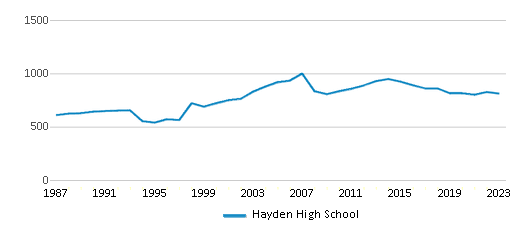
Gender %
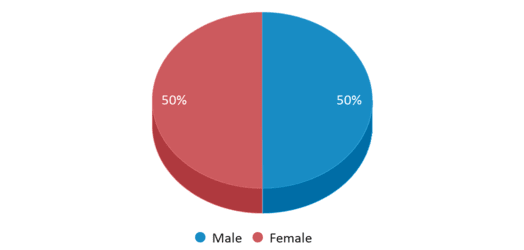
Total Classroom Teachers
42 teachers

Students by Grade
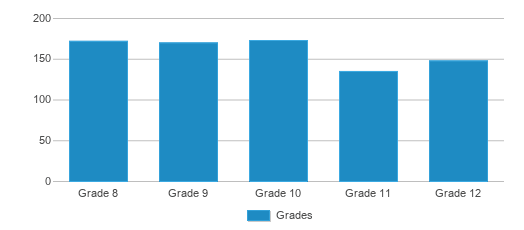
School Rankings
Hayden High School ranks within the top 50% of all 1,285 schools in Alabama (based off of combined math and reading proficiency testing data).
The diversity score of Hayden High School is 0.12, which is less than the diversity score at state average of 0.63. The school's diversity has stayed relatively flat over five school years.
Overall Testing Rank
#620 out of 1285 schools
(Top 50%)
(Top 50%)
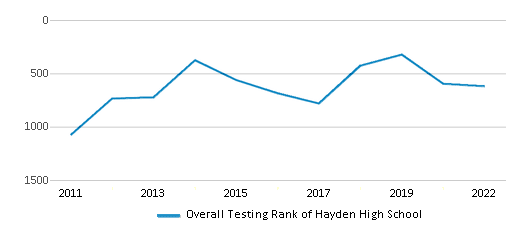
Math Test Scores (% Proficient)
19%
29%
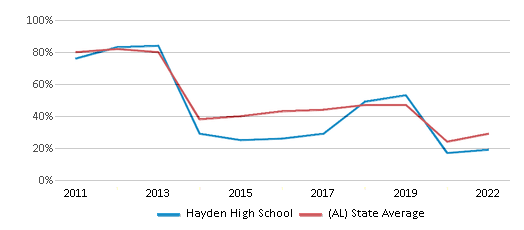
Reading/Language Arts Test Scores (% Proficient)
48%
47%
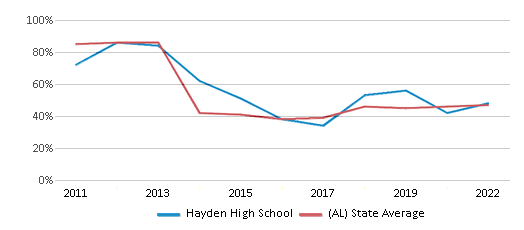
Science Test Scores (% Proficient)
37%
38%
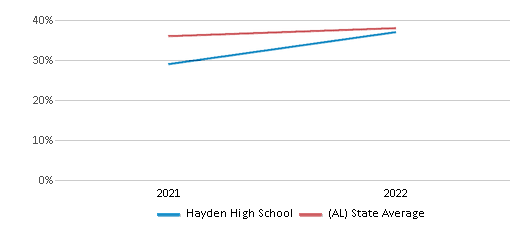
Student : Teacher Ratio
19:1
17:1
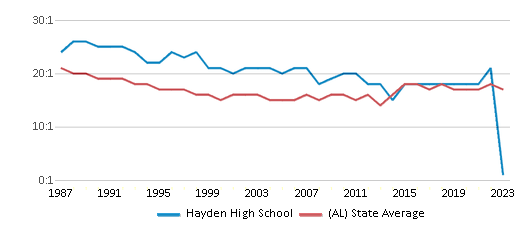
American Indian
n/a
1%
Asian
1%
1%
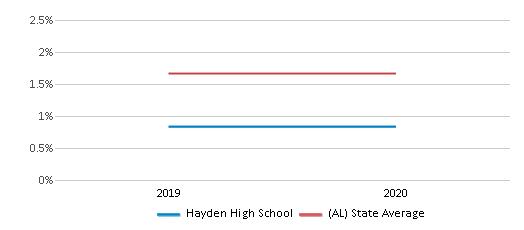
Hispanic
3%
11%
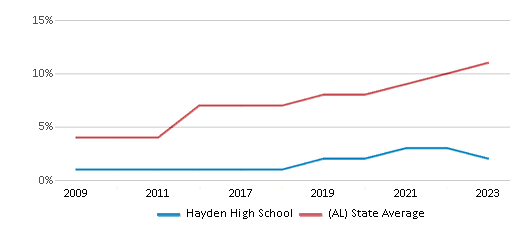
Black
1%
32%
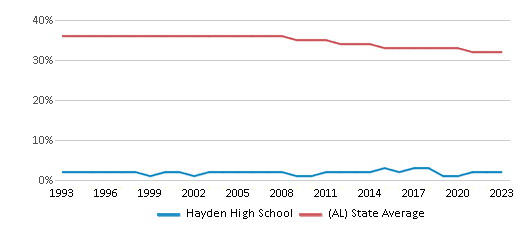
White
94%
51%
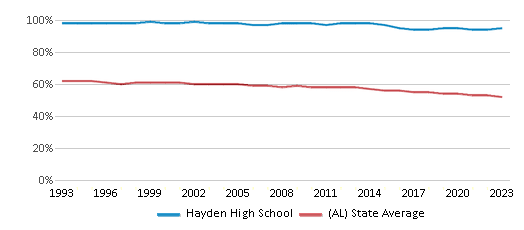
Hawaiian
n/a
n/a
Two or more races
1%
4%
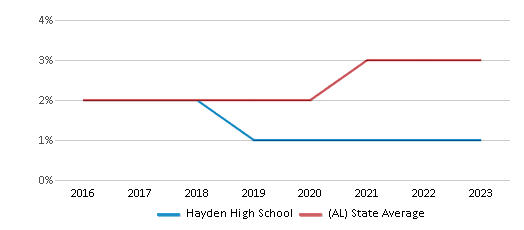
All Ethnic Groups
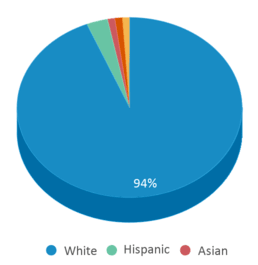
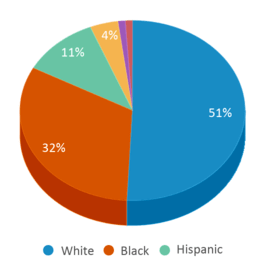
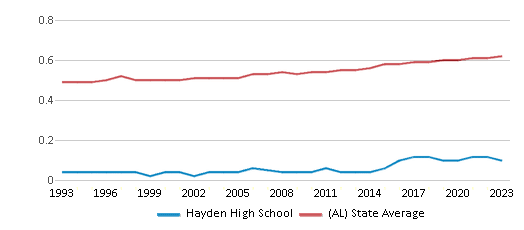
Graduation Rate
≥95%
88%

Participates in the National School Lunch Program (NSLP)
Yes
Eligible for Free Lunch
36%
56%
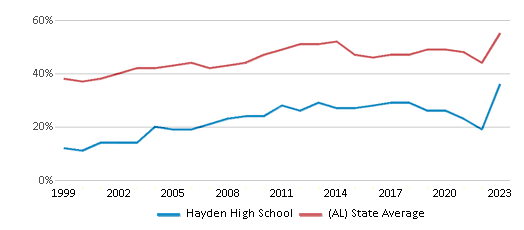
Eligible for Reduced Lunch
6%
5%
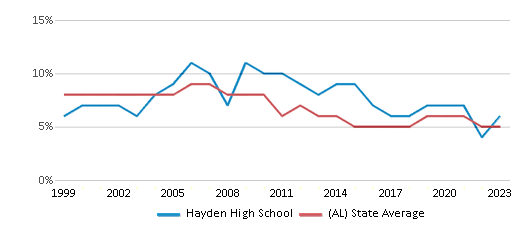
School Statewide Testing
School District Name
Source: National Center for Education Statistics (NCES), AL Dept. of Education
Profile last updated: 02/09/2025
Frequently Asked Questions
What is Hayden High School's ranking?
Hayden High School is ranked #620 out of 1,285 schools, which ranks it among the top 50% of public schools in Alabama.
What schools are Hayden High School often compared to?
Hayden High Schoolis often viewed alongside schools like Oneonta High School by visitors of our site.
What percent of students have achieved state testing proficiency in math and reading?
19% of students have achieved math proficiency (compared to the 29% AL state average), while 48% of students have achieved reading proficiency (compared to the 47% AL state average).
What is the graduation rate of Hayden High School?
The graduation rate of Hayden High School is 95%, which is higher than the Alabama state average of 88%.
How many students attend Hayden High School?
798 students attend Hayden High School.
What is the racial composition of the student body?
94% of Hayden High School students are White, 3% of students are Hispanic, 1% of students are Asian, 1% of students are Black, and 1% of students are Two or more races.
What is the student:teacher ratio of Hayden High School?
Hayden High School has a student ration of 19:1, which is higher than the Alabama state average of 17:1.
What grades does Hayden High School offer ?
Hayden High School offers enrollment in grades 8-12
What school district is Hayden High School part of?
Hayden High School is part of Blount County School District.
School Reviews
2 9/19/2011
I took my daughter on a tour when she was a junior. I wanted her to appreciate the academic classes that she was receiving at her current school.
When they asked me what classes she was currently taking, I had to explain to them what an AP class was as they assumed that I was referring to a simple honors curriculum. I was told that she would have to do dual enrollment to get the same type of classes.
My daughter was not impressed in the least when she saw an obvious lack of rigorous academic, language, and fine art curriculum as well a lack of student diversity.
As an educator, I found this disturbing. As a former student, I was not surprised. As a parent, I would not send my children there.
They deserve better. They deserve an environment rich in academics, language, and diversity, not one that is biased and ill-prepared to meet my child's needs.
I can say this much, the school system did offer a trade school rich in technical instruction while I was there.
Review Hayden High School. Reviews should be a few sentences in length. Please include any comments on:
- Quality of academic programs, teachers, and facilities
- Availability of music, art, sports and other extracurricular activities
Recent Articles

What Is A Charter School?
Explore the world of charter schools in this comprehensive guide. Learn about their history, how they operate, and the pros and cons of this educational innovation. Discover key facts about charter schools, including admission policies, demographics, and funding, as well as what to look for when considering a charter school for your child.

10 Reasons Why High School Sports Benefit Students
Discover the 10 compelling reasons why high school sports are beneficial for students. This comprehensive article explores how athletics enhance academic performance, foster personal growth, and develop crucial life skills. From improved fitness and time management to leadership development and community representation, learn why participating in high school sports can be a game-changer for students' overall success and well-being.

February 05, 2025
Understanding the U.S. Department of Education: Structure, Impact, and EvolutionWe explore how the Department of Education shapes American education, from its cabinet-level leadership to its impact on millions of students, written for general audiences seeking clarity on this vital institution.





